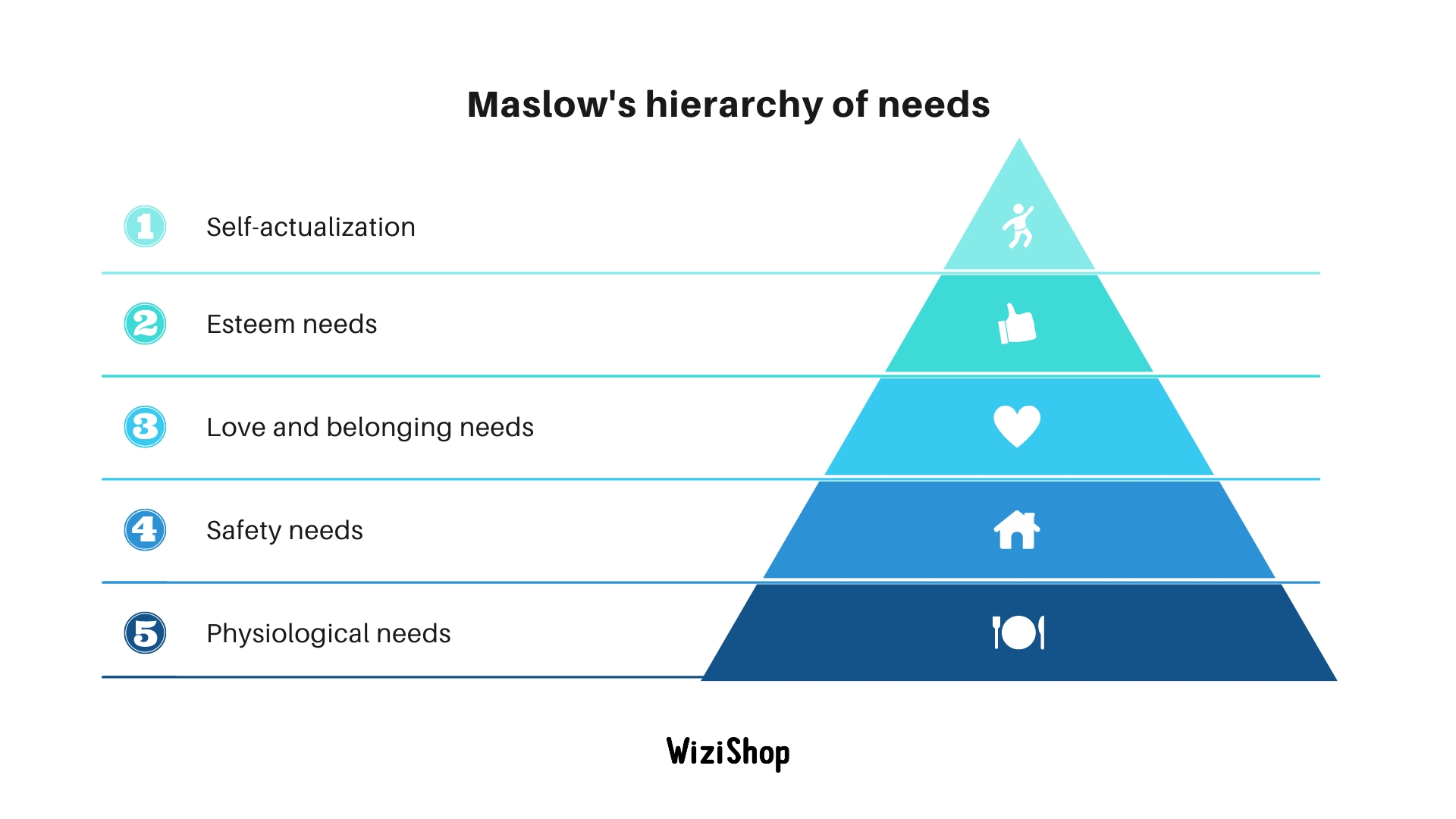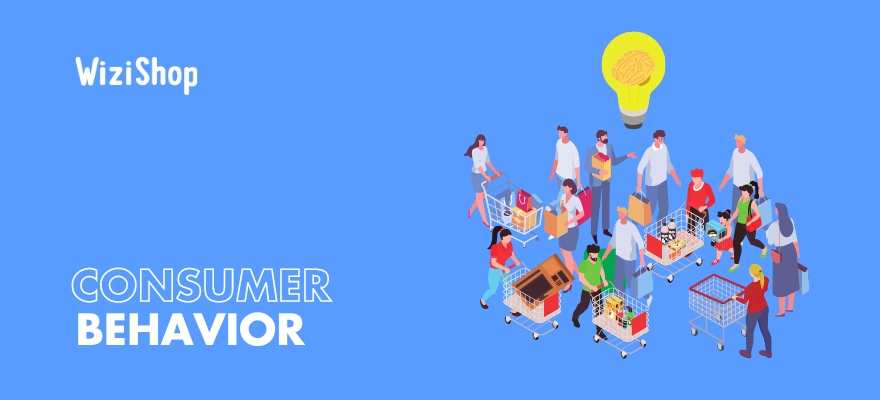Culture, age, taste, society, and environment all influence the habits of buyers. For example, the behavior of customers in Europe and Asia is not at all the same.
In order to convince potential customers to buy a product from you, it’s essential for you to show empathy and to understand them. That's why it’s highly recommended to perform an audit of your customers' behaviors.
Thanks to this, you’ll be able to have a better vision of their buying motivations, which is an excellent starting point to provide them with the right sales pitch.
How do you analyze consumer behavior?
Understanding consumer behavior is a complex task that’s essential to define an offer that corresponds to them.
A good knowledge of their personality allows you to better understand the influence of the internet on society and to provide them with optimal support.
Definition of consumer behavior
Consumer behavior focuses on the psychology of customers, their motivation to buy, and their behavior.
It’s an analysis that includes how consumers think and how they feel and act when presented with a choice.
Consumer behavior refers to the process of decision and action that a customer takes when buying a product. It’s about studying the entire decision-making process in order to implement a more effective ecommerce marketing strategy.
Why try to understand consumer behavior?
The importance of ecommerce cannot be denied. It makes it possible for entrepreneurs to have an unlimited number of customers. However, attracting shoppers doesn’t come automatically. The study of consumer behavior is an essential element for any good marketer.
First of all, it’s necessary to know the needs of your customers to establish an offer that meets their expectations.
Second, it’s also essential to comprehend what factors determine their choice and prompt action.
By fully understanding your customers' personalities and the context in which they make decisions, you’ll be better able to support the ecommerce customer experience and influence their buying behavior.
This audit is essential to determine the actions to be implemented within the company to sell as much as possible.
Moreover, at WiziShop, we’re well aware that this is a crucial issue. To help you in this complex mission, our Business Coaches are precious allies. They can help you understand this marketing concept and apply it to your business.
Try WiziShop free for 7 days
THE EASIEST NO-CODE ECOMMERCE SOLUTION✅ No credit card required
✅ Access to all features
✅ No commitment
What are the three types of principles that influence consumer behavior?
Generally speaking, there are three main elements that determine consumer behavior.
- Personal factors: these are all the elements that are specific to each customer and that can influence their purchasing act. Generally, demographic factors such as age, gender, culture, or occupation have a fundamental impact. Logically, a 40-year-old stay-at-home mom will not have the same expectations as a 16-year-old consumer.
- Psychological factors: not all consumers are sensitive to the same elements either. The idea is to find the spark that will trigger an emotion. In this sense, it’s a question of studying your customers' beliefs and their ability to understand certain information. Psychological factors are more related to the mentality of each individual.
- Social factors: the customer's environment also plays a fundamental role, as does their level of education, social class, and income.
What are the different factors that influence behavior?
Throughout a consumer’s life, their behaviors will change. Their age, inner circle, social level, and the economic context or the cultural environment in which they evolve are all elements likely to vary their attitude during the purchasing process.
Family environment
Family members have a major influence on consumer behavior. Very often, the customer is not alone in making a purchase decision. They may, for example, refer to their spouse, their children, or their parents before making a decision.
The objective of the marketing manager or the retailer is then to convince not only the customer, but also their close relatives... The message sent must be able to convince the targeted consumer as well as their closest relatives.
Buyer's social context
Beyond the family circle, other people can have a major influence on your customers.
Humans are constantly evolving in a social environment. Throughout their lives, they meet new people, both personal and professional. All the people they meet can have an influence on their choices.
They may be colleagues, friends, community members on social networks, opinion leaders, or members of the associations to which they belong. Learning about their social context is essential to being able to fully understand their expectations.
Cultural environment
Each individual also has their own culture and beliefs.
Here again, these are very different from one part of the world to another. However, cultural influences and beliefs, even the colors that push people to buy, are unavoidable elements when we talk about consumer behavior.
They can be major purchasing roadblocks as well as particularly favorable elements.
This is why international brands never address a customer living in the United States in the same way as one living in Asia or Europe. The products offered are studied on a case-by-case basis, depending on the region of the world targeted.
Economic context
Finally, because purchases are often made according to the consumer's income, the economic context is also important. As you’ll discover when marketing to high-end consumers, for instance, an individual with a high income will be able to afford more expensive products than a consumer with a smaller budget.
Depending on their purchasing power, potential customers won’t place their priorities in the same places.
This is why, for example, some food consumers focus exclusively on price, while others are more careful to choose certain brands or to favor certain nutritional qualities.
Typologies of internal factors that influence purchase
All of the above factors are considered external, as they involve interaction with other individuals, a particular location, or an economic environment. On the other hand, there are also a lot of internal factors that also have an impact on the buying act.
Emotions
Depending on their needs, state of mind, current well-being, their interests, or history, individuals don’t give the same importance to all the messages that are sent to them.
Thus, they’re likely to experience more or less positive emotions from all elements included in a marketing campaign.
For example, a mother will be more attentive than a teenager to an ad featuring young children. The idea is to play on the consumer's emotions to create the little spark that will incite them to buy.
Motivation
When we talk about motivation, we’re talking about all the elements that encourage people to do something or act in a specific way.
Purchase motives include everything that’s likely to push the consumer to buy a product. On the other hand, obstacles are all the things that slow down the consumer in their approach. Motives are generally of three types:
- Hedonistic motives: they consist of satisfying a personal physical or intellectual pleasure. For example, this might be to buy a tasty Italian ice cream to enjoy it on the beach.
- Oblative motives: these are all the impulses related to the desire to please someone else. This is especially the case when we give a gift to a loved one.
- Self-expression motives: these allow us to express who we are. These are all purchases related to appearance and the image we project in our social interactions. When we buy a nice car, new clothes or interior decorations, these are purchasing acts driven by self-expression motives.
Personality and attitude
Each individual has their own personality. Every consumer is defined by their character and their motives.
Every potential customer is therefore likely to act differently. Two customers who look the same will not necessarily have the same reaction to make the same purchase.
When defining consumer behavior, the idea is to establish an overall personality and a general way of reacting in a particular business context. The objective is to determine the most plausible attitude in a given situation.
Needs: why study Maslow's hierarchy of needs?
In marketing, identifying the needs of your customers is fundamental.
Logically, it seems totally useless to design a product that nobody really needs. Note in passing that some consumer expectations are expressed while others are not yet conscious.
The goal of good marketers is also to highlight the future needs of customers. For example, 50 years ago, nobody thought they would need a smartphone...
Maslow's hierarchy of needs ranks needs by importance. According to this theory, as long as the basic needs aren’t fully satisfied, the customer doesn’t even try to satisfy the needs that follow.
- Physiological needs: food, water, sleep
- Safety needs: housing, health, job security, protection
- Love and belonging needs: family, friendship
- Esteem needs: self-respect, recognition from others
- Self-actualization: full personal development

To better understand this, let's take an example. A consumer who doesn’t have enough money to eat their fill will never worry about buying a new car.
In other words, as long as their physiological needs aren’t fulfilled, the consumer won’t care about their esteem needs or personal fulfillment.
How can you better target and influence the consumer?
A good marketing campaign is a compelling message that encourages consumers to buy a product. A good marketer is someone who uses the right arguments at the right time to encourage purchase.
The study of consumer behavior is an essential basis for this.
Understand customer behavior to adjust your marketing
Personalization is one of the top ecommerce trends today. Did you know that 84% of consumers expect personalization of the services and products they are offered? They want to be considered as individuals, not as file numbers.
To offer them what they expect, it’s crucial for you to study their behavior.
This requires preparatory analysis before implementing any sales and marketing action. The target customer and the identification of their profile are the keys to judiciously defining your product range, your prices, the image you want to send out, and the marketing campaigns you want to set up.
Consumer behavior study: long live digital!
So how do you go about gathering all this information about your consumers? Rest assured, there are several methods that will allow you to refine your segments and know your buyers like the back of your hand:
- Some online tools or types of software allow you to collect a whole bunch of indicators on your consumers. For example, Google Analytics will tell you where your website visitors are coming from and will add other demographic or statistical information to this data.
- Customer reviews and surveys are also very important. They allow you to be fully aware of what your customers are thinking. They’re a major source of information to help you improve. So think about reading all their comments (forums, social media, or Q&A sites are real gold mines of information);
- Your customer base is also a precious ally. Think about enriching it as soon as you have the opportunity. It’ll allow you to know who your customers are, what their age is, where they live, their average shopping cart value, etc.
Buying behavior is an element that’s constantly evolving. When you own a commercial enterprise, it’s essential to know how to continually question yourself.
This also means re-evaluating the expectations of your potential customers. You may be surprised to learn that 23% of customers shop directly from work, according to Net Offensive. In addition, 20% of them also like to shop in their bathroom or car.
As you can see, studying the buying behavior of the final consumer is far from being an easy task!










